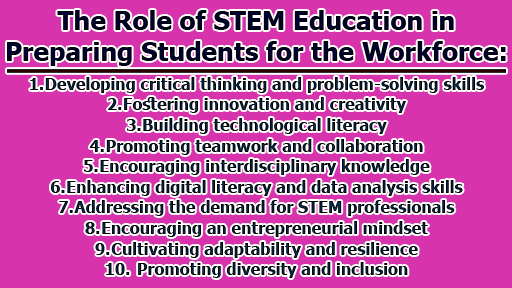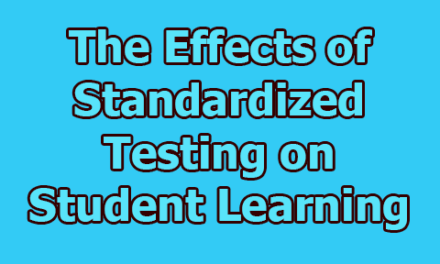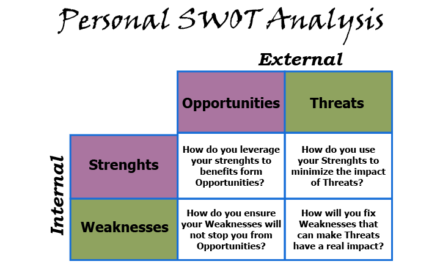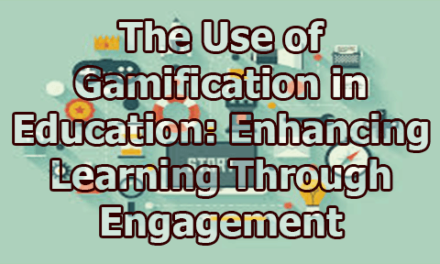The Role of STEM Education in Preparing Students for the Workforce:
STEM education plays a crucial role in preparing students for the workforce by equipping them with the knowledge, skills, and mindset necessary to succeed in today’s rapidly evolving technological landscape. STEM stands for Science, Technology, Engineering, and Mathematics, and these fields are integral to numerous industries and professions. In the rest of this article, we are going to know about the role of stem education in preparing students for the workforce.
1. Developing critical thinking and problem-solving skills: STEM education emphasizes the development of critical thinking and problem-solving abilities. Students are encouraged to analyze complex situations, break them down into smaller components, and apply scientific and mathematical principles to find innovative solutions. These skills are highly valued in the workforce, where employees often encounter challenges that require creative and analytical thinking.
2. Fostering innovation and creativity: STEM education promotes innovation and creativity by encouraging students to explore, experiment, and think outside the box. It nurtures curiosity and a passion for discovery, enabling students to develop new ideas and approaches to solving problems. In the workforce, employers seek individuals who can generate fresh ideas, adapt to change, and contribute to the development of new technologies and products.
3. Building technological literacy: In today’s digital age, technological literacy is essential for success in the workforce. STEM education exposes students to various technologies, tools, and software, helping them become familiar with the latest advancements and trends. This prepares them to navigate and adapt to emerging technologies, which are increasingly integrated into workplaces across industries.
4. Promoting teamwork and collaboration: STEM education often involves collaborative projects and group work, reflecting the collaborative nature of many professional settings. Students learn to communicate effectively, work in teams, and appreciate diverse perspectives. These interpersonal skills are crucial for the workplace, as most jobs require collaboration with colleagues, clients, and stakeholders.
5. Encouraging interdisciplinary knowledge: STEM education encourages the integration of knowledge from different disciplines. By combining scientific, technological, engineering, and mathematical principles, students gain a holistic understanding of complex real-world problems. This interdisciplinary approach prepares them for the interconnected nature of the modern workforce, where professionals often need to collaborate across fields to address multifaceted challenges.
6. Enhancing digital literacy and data analysis skills: STEM education equips students with digital literacy skills, including proficiency in using technology tools and software. Additionally, it emphasizes data analysis and interpretation, helping students make informed decisions based on evidence. In an era of data-driven decision-making, these skills are highly sought after in various industries, such as finance, healthcare, marketing, and research.
7. Addressing the demand for STEM professionals: The demand for professionals in STEM fields is rapidly growing, and STEM education aims to bridge this skills gap. By cultivating students’ interest and proficiency in these areas, it prepares them for careers in fields like engineering, computer science, biotechnology, robotics, and data analysis. Providing students with STEM education ensures a pipeline of qualified individuals to meet the workforce demands of the future.
8. Encouraging an entrepreneurial mindset: STEM education instills an entrepreneurial mindset in students, empowering them to identify opportunities, take risks, and turn their ideas into viable solutions. It promotes an understanding of market needs, customer preferences, and the process of innovation and commercialization. This entrepreneurial mindset prepares students to pursue their own ventures or contribute to innovation within existing organizations.
9. Cultivating adaptability and resilience: STEM education emphasizes adaptability and resilience, as students often encounter complex problems that require iterative approaches and the ability to overcome setbacks. They learn to embrace failure as a learning opportunity and develop perseverance in the face of challenges. These qualities are highly valuable in the workforce, where technological advancements and evolving industries necessitate continuous learning and adaptation.
10. Promoting diversity and inclusion: STEM education strives to promote diversity and inclusion by encouraging equal participation and representation of students from all backgrounds. By providing equitable access to STEM education, it helps break down barriers and biases, ensuring a diverse talent pool in the future workforce. This diversity fosters innovation, as different perspectives and experiences lead to more creative solutions and problem-solving approaches.
11. Bridging the gender gap in STEM fields: Historically, there has been a significant gender gap in STEM fields, with women being underrepresented. STEM education aims to bridge this gap by promoting gender equality and encouraging girls to pursue careers in traditionally male-dominated fields. By providing supportive and inclusive learning environments, STEM education helps empower girls and women to explore and excel in STEM disciplines, ensuring a more balanced and diverse workforce.
12. Facilitating career exploration and pathways: STEM education exposes students to a wide range of STEM-related careers and pathways. Through hands-on activities, mentorship programs, and industry partnerships, students can explore different fields and gain insights into potential career options. This exposure helps them make informed decisions about their future educational and career paths, ensuring a better alignment between their interests, skills, and the demands of the job market.
13. Addressing global challenges: STEM education equips students with the knowledge and skills to tackle global challenges, such as climate change, renewable energy, healthcare disparities, and technological advancements. By fostering an understanding of the interconnectedness between science, technology, engineering, and mathematics, students are prepared to address complex issues that require interdisciplinary solutions. This prepares them to contribute to solving pressing societal challenges in their future careers.
14. Lifelong learning and professional development: STEM education promotes lifelong learning and continuous professional development. It establishes a foundation of scientific inquiry, critical thinking, and problem-solving skills that students can build upon throughout their careers. Additionally, it cultivates a mindset of curiosity and a passion for learning, encouraging individuals to stay updated with emerging technologies and advancements in their respective fields.
15. Economic growth and competitiveness: STEM education plays a crucial role in driving economic growth and maintaining a competitive edge in a globalized world. It produces a skilled workforce that is at the forefront of technological advancements, innovation, and research. Countries that prioritize STEM education can attract investment, foster innovation-driven industries, and maintain a competitive advantage in the global marketplace.
16. Environmental awareness and sustainability: STEM education emphasizes environmental awareness and sustainability by fostering an understanding of the impact of human activities on the environment. Students learn about sustainable practices, renewable energy sources, and strategies for mitigating climate change. This knowledge equips them to contribute to sustainable development in various industries, such as green engineering, renewable energy, and environmental conservation.
17. Data literacy and data-driven decision-making: STEM education emphasizes data literacy, including the ability to collect, analyze, and interpret data. Students learn statistical methods, data visualization techniques, and data-driven decision-making processes. This enables them to make informed choices based on evidence and data, a skill highly valued in fields such as data science, business analytics, and market research.
18. Mentorship and exposure to STEM professionals: STEM education often incorporates mentorship programs and opportunities for students to interact with STEM professionals. This exposure provides valuable insights into different career paths, industry expectations, and professional development. Mentorship helps students build connections, gain guidance, and develop a deeper understanding of the practical applications of STEM in the workforce.
From the above discussion, we can say that the role of STEM education in preparing students for the workforce is pivotal and multifaceted. STEM education equips students with a wide range of knowledge, skills, and mindsets necessary to excel in today’s rapidly evolving job market. By fostering critical thinking, problem-solving skills, and innovation, STEM education prepares students to tackle complex challenges and find creative solutions. It promotes technological literacy, interdisciplinary knowledge, and digital skills, enabling students to adapt to emerging technologies and navigate the digital landscape. Moreover, STEM education emphasizes collaboration, communication, and cultural competency, preparing students to work effectively in diverse teams and global contexts. It also addresses the demand for STEM professionals and helps bridge the gender gap in STEM fields, ensuring a diverse and qualified workforce. STEM education cultivates an entrepreneurial mindset, instills ethical considerations, and promotes environmental awareness, contributing to economic growth, sustainability, and social responsibility. Furthermore, STEM education emphasizes lifelong learning, adaptability, and continuous professional development, enabling individuals to stay relevant and thrive in an ever-changing job market. By encompassing these various aspects, STEM education plays a vital role in preparing students to meet the demands of the workforce, drive innovation, and contribute to a prosperous and sustainable future.
FAQs:
What specific skills do students gain from STEM education that are valuable in the workforce?
STEM education equips students with a range of valuable skills, including critical thinking, problem-solving, creativity, collaboration, and communication. Additionally, they develop technological literacy, data analysis skills, and interdisciplinary knowledge. These skills are highly sought after by employers as they enable students to adapt to new technologies, contribute to innovation, and navigate complex challenges in the workplace.
How does STEM education contribute to career readiness?
STEM education prepares students for careers by providing them with a strong foundation in science, technology, engineering, and mathematics. It exposes them to industry-relevant skills, internships, and real-world applications of STEM principles. By fostering an entrepreneurial mindset, promoting career exploration, and facilitating connections with STEM professionals, it helps students make informed decisions about their career paths and enhances their employability in STEM-related fields.
How does STEM education address the demand for STEM professionals?
STEM education plays a crucial role in addressing the increasing demand for professionals in STEM fields. By cultivating students’ interest and proficiency in science, technology, engineering, and mathematics, it creates a pipeline of qualified individuals who can fill job vacancies in sectors such as engineering, computer science, healthcare, biotechnology, and data analysis. STEM education ensures that students possess the necessary skills and knowledge to contribute to innovation and drive economic growth.
Does STEM education promote diversity and inclusion in the workforce?
Yes, STEM education actively promotes diversity and inclusion in the workforce. It encourages equal participation and representation of students from all backgrounds, genders, and ethnicities. By providing equitable access to STEM education, it breaks down barriers and biases that have traditionally limited underrepresented groups’ opportunities in STEM fields. By nurturing a diverse talent pool, STEM education fosters innovation, creativity, and brings different perspectives to problem-solving in the workforce.
How does STEM education prepare students for the future of work?
STEM education prepares students for the future of work by developing adaptable skills and mindsets. It equips them with the ability to navigate technological advancements, embrace lifelong learning, and thrive in a rapidly changing job market. By emphasizing critical thinking, problem-solving, and digital literacy, STEM education prepares students to be flexible, innovative, and capable of taking on new challenges and emerging roles in the evolving workforce.
How does STEM education contribute to economic growth?
STEM education is a driving force behind economic growth. By producing a skilled workforce in science, technology, engineering, and mathematics, it fuels innovation, entrepreneurship, and the development of new technologies and industries. STEM education attracts investment, supports the growth of innovation-driven sectors, and creates job opportunities. It also equips individuals with the skills to contribute to sustainable economic development and address societal challenges through STEM-related solutions.
How does STEM education foster innovation and entrepreneurial skills?
STEM education fosters innovation by encouraging students to think critically, explore new ideas, and find creative solutions to problems. It provides opportunities for hands-on experimentation and project-based learning, allowing students to apply their knowledge in practical ways. Moreover, STEM education promotes an entrepreneurial mindset by teaching students about market needs, product development, and the process of turning ideas into viable solutions. These skills and mindsets empower students to become innovative thinkers and potential entrepreneurs in the workforce.
Does STEM education contribute to global competitiveness?
Yes, STEM education plays a vital role in maintaining global competitiveness. It equips students with the knowledge and skills needed to thrive in a technology-driven and interconnected world. By emphasizing scientific inquiry, technological literacy, and problem-solving abilities, STEM education prepares students to excel in industries that are critical for economic competitiveness, such as advanced manufacturing, information technology, biotechnology, and renewable energy. Additionally, STEM education nurtures a global perspective, promoting cross-cultural understanding and collaboration, which is essential for competing in the global marketplace.
How does STEM education address future workforce needs?
STEM education is designed to address future workforce needs by aligning with emerging industries and technological advancements. It focuses on developing skills in areas such as artificial intelligence, robotics, data science, cybersecurity, and sustainable technologies. By providing students with a solid foundation in these areas, STEM education ensures they are well-prepared to meet the evolving demands of the job market. STEM education also emphasizes adaptability, continuous learning, and the ability to acquire new skills, enabling students to navigate career shifts and thrive in a rapidly changing workforce.
What role does STEM education play in societal development?
STEM education plays a critical role in societal development by equipping students with the knowledge and skills to address pressing societal challenges. It prepares them to tackle issues such as climate change, healthcare disparities, energy sustainability, and food security. STEM education promotes an understanding of the interconnectedness between scientific, technological, engineering, and mathematical concepts, enabling students to contribute to finding solutions to these challenges. By nurturing a STEM-literate population, STEM education helps create a more sustainable, equitable, and prosperous society.
How does STEM education contribute to lifelong learning?
STEM education fosters a lifelong learning mindset by emphasizing curiosity, exploration, and the pursuit of knowledge. It teaches students how to approach problems systematically, ask questions, and seek evidence-based solutions. STEM education also cultivates critical thinking skills, enabling individuals to evaluate and adapt to new information and technologies throughout their lives. By promoting a passion for learning, STEM education encourages students to engage in continuous professional development, stay updated with the latest advancements, and remain adaptable in a rapidly changing workforce.

Assistant Teacher at Zinzira Pir Mohammad Pilot School and College










